Phone: +1 (903) 561-3142

When it comes to “exotic fish”, most aquarists think of saltwater species like Clownfish or the Blue Tang. After all, many saltwater fish come with a gorgeous selection of varying colors, patterns, and personalities. You may be surprised to find out that there are a vast amount of exotic freshwater fish that are perfect for […]
When it comes to “exotic fish”, most aquarists think of saltwater species like Clownfish or the Blue Tang. After all, many saltwater fish come with a gorgeous selection of varying colors, patterns, and personalities. You may be surprised to find out that there are a vast amount of exotic freshwater fish that are perfect for your aquarium!
These colorful and unique fish are usually found in the waters of South America, Africa, and Asia, providing your tank with the vibrant touch it needs. If you would like to start keeping exotic freshwater fish, here are 7 great choices you can choose!

A native of the Amazon river delta, the Discus is a calm, beautiful fish that’s easily recognizable for their thin, disk-shaped body. Due to years of captivity, this species comes in a diverse array of gorgeous colors and patterns—they are a delight to behold in any aquarium! Most Discus have yellow or red eyes and notable dorsal fins.
Although relatively easy to care for, Discus fish are more delicate than other freshwater species so they’re usually recommended for experienced aquarists.This species should always be kept in tanks of at least 75 gallons. Their typical diet can consist of algae flakes, tropical flakes, or shrimp pellets. These little swimmers love to feed at the bottom of the tank, which can make feeding time a challenge.
Discus are very peaceful and can get along with other freshwater fish, but they thrive best with other members of their species. Make sure to keep any aggressive fish or bottom dwellers away from your tank.
Striking and bold, the Wolf Cichlid is an intelligent freshwater fish known for its territorial personality. They must be kept in a 200-gallon tank to have enough space to move around. You may notice that these swimmers are remarkably good-looking. That’s because their colors range from silver to gold with blue, black, green, and even purple scales.
Wolf Cichlids are not fond of sharing the spotlight with other tank mates. They can be aggressive with any freshwater fish that aren’t members of their species. It’s also not a good idea to add live plants to a tank with a Wolf Cichlids. Why? Well, their favorite hobby is digging, and they won’t hesitate to uproot a plant.
These fish are perfect for a hobbyists with years of experience. Wolf Cichlids are very smart, and can easily learn and bond with their owners. Their diet should consist of bugs, bloodworms, and small crustaceans. If you are consistent with care, you can expect to have a longtime fish friend for a few decades.
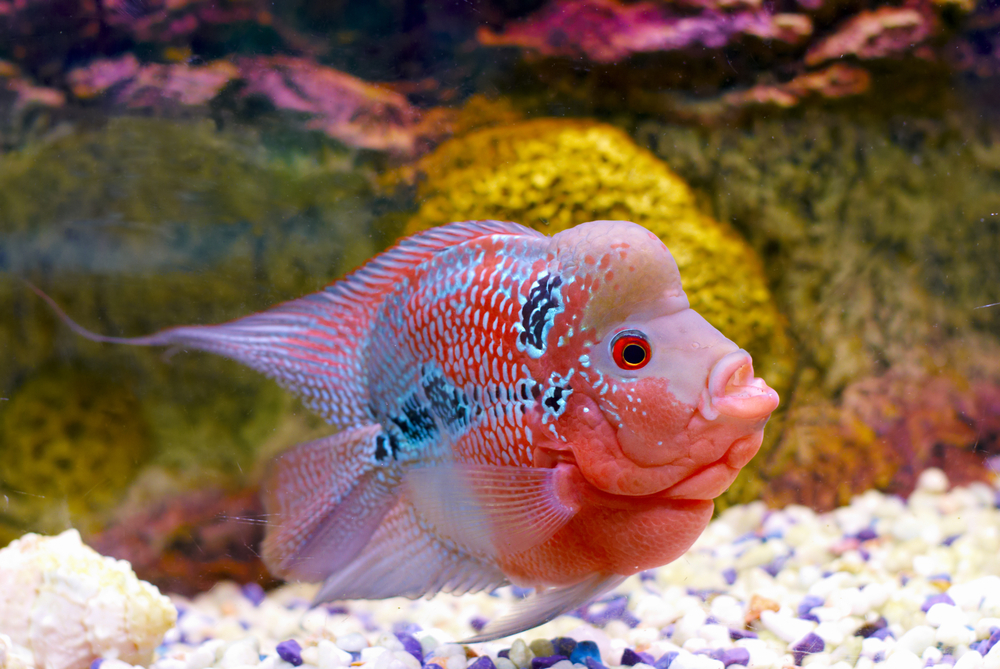
The Flowerhorn Cichlid is one of the most unique and beautiful freshwater fish in existence. They’re instantly noticeable for the odd, horn-like growth on the top of their heads and vibrant color pattern.
Their beauty is also matched by their wonderful personalities. Flowerhorn Cichlids are known for being interactive, intelligent, and curious. They love bonding with their owners; some even enjoy being petted!
Flowerhorns come in a variety of colors and patterns that add a vibrant dash of color to your aquarium. Their “horn”, however, is always a bright red color. Unfortunately, these fish seem to know they’re beautiful and so, they hate sharing their owner’s love with other tank mates. Flowerhorns prefer members of their own species, and display aggression with other freshwater fish.
They require an aquarium that’s at least 75 gallons. If you plan to have them share a tank with other Flowerhorns, the aquarium should be at least 200 gallons or more. They should also be fed crickets, mealworms, and frozen shrimp.
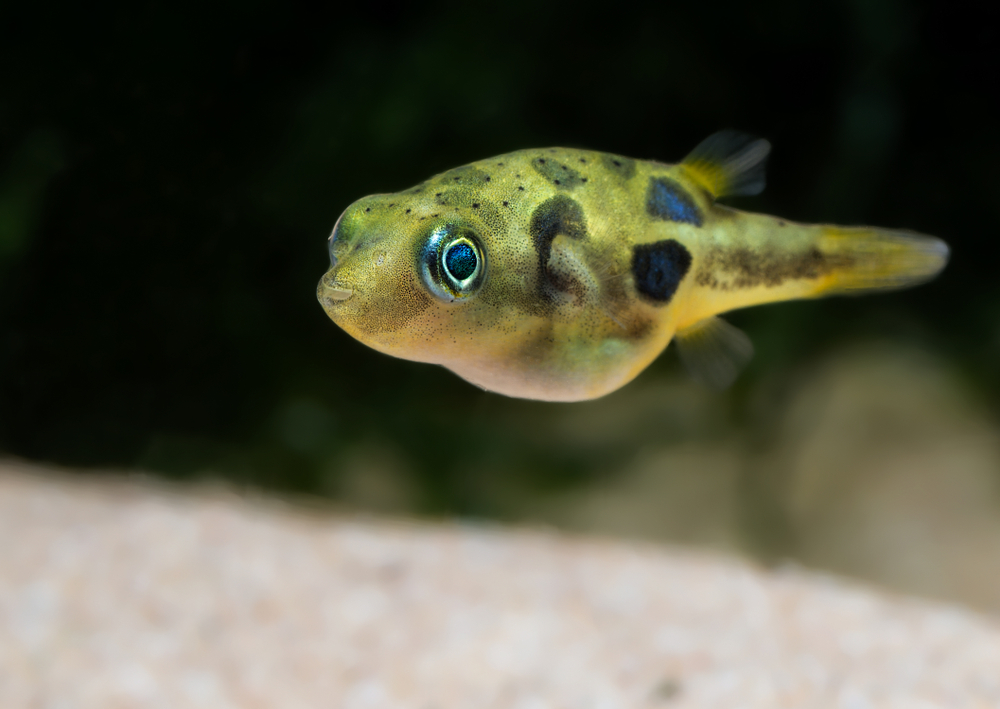
The Dwarf Puffer is quite an adorable little fish that’s easy for beginner aquarists to raise. Only reaching 1 to 2.5 inches in length, Dwarf Puffers only need a 10 gallon tank to be happy and healthy. They also love to eat shrimp, bloodworms, and snails. Their usual colors are greenish brown with yellowish-white bellies. They also have a cool, chameleon-like ability to move their eyes independently of their bodies.
Despite their cute appearance, Dwarf Puffers are not friendly towards other fish. They’re charming with owners but their bold personalities can cause them to bully their tank mates. They tend to get along well with other members of their species.
It’s important to keep ammonia levels down in a tank as it can be deadly to Dwarf Puffers. Tanks should also be cleaned regularly so that these little fish can live long and happy lives!
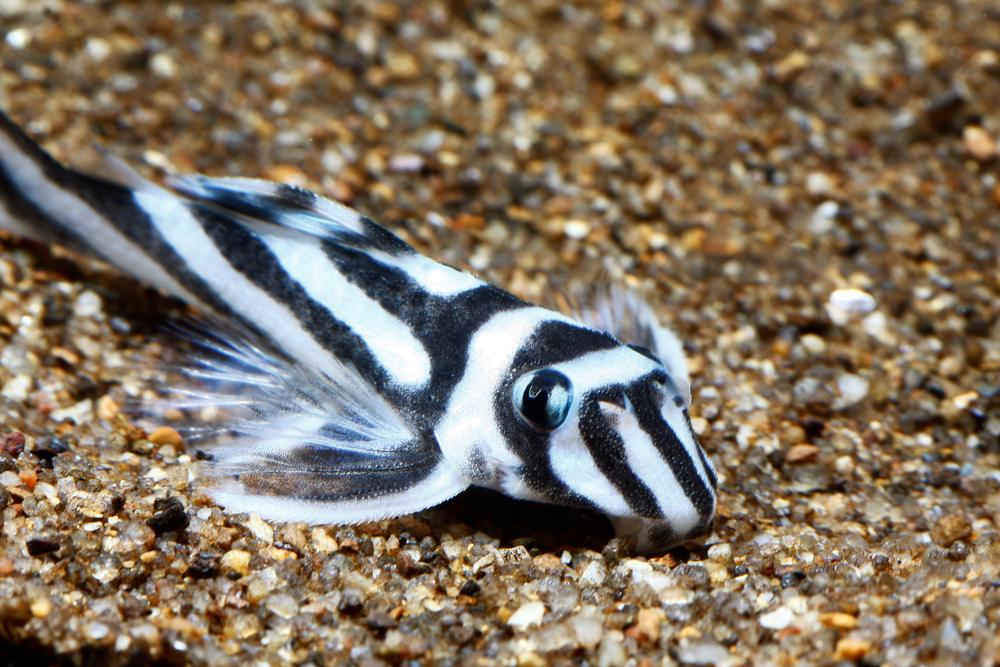
Another great fish species for beginners, the Zebra Plecos is best known for its black and white color pattern. It is a native of the Amazon river, where it prefers to live in small caves and in between rocks. Your tank should have good hiding spots like rocks and other decor to accommodate your Zebra Plecos’ living preferences.
A Zebra Plecos must also be kept in a tank that’s at least 30 gallons, warm, and rich with oxygen. They are nocturnal and enjoy being around other members of their own species.
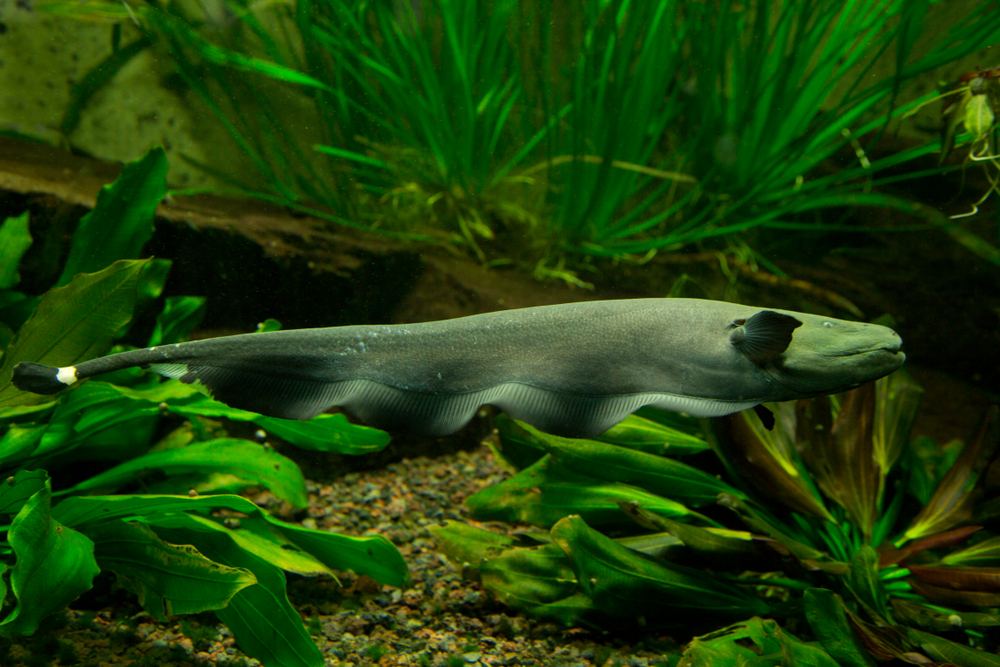
Because of their adaptation to low-light environments, the Black Ghost Knifefish is a freshwater fish with a unique appearance. They do not have any scales like other freshwater species. Instead, they possess a black “skin” and a narrow body that’s shaped like a knife (hence the name). Their tolerance for low-light environments has given them the ability to use electromagnetic fields for navigation—similar to eels!
Like the Zebra Plecos, the Black Ghost Knifefish likes having a good place to hide away. These swimmers have incredibly timid personalities, and usually come out of their hiding spots at night. Therefore, it’s important that a tank housing these fish has enough decor to serve as hiding places.
Knifefish also thrive best in tanks that are at least 150 gallons (or larger, depending on the amount of tank mates). They love eating a variety of foods, especially live worms, meat, and freshwater flakes. Their peaceful and shy personalities make them good companions for other freshwater fish, but they may be prone to illness. You should also make sure that your tank is kept clean and regulated on a daily basis.
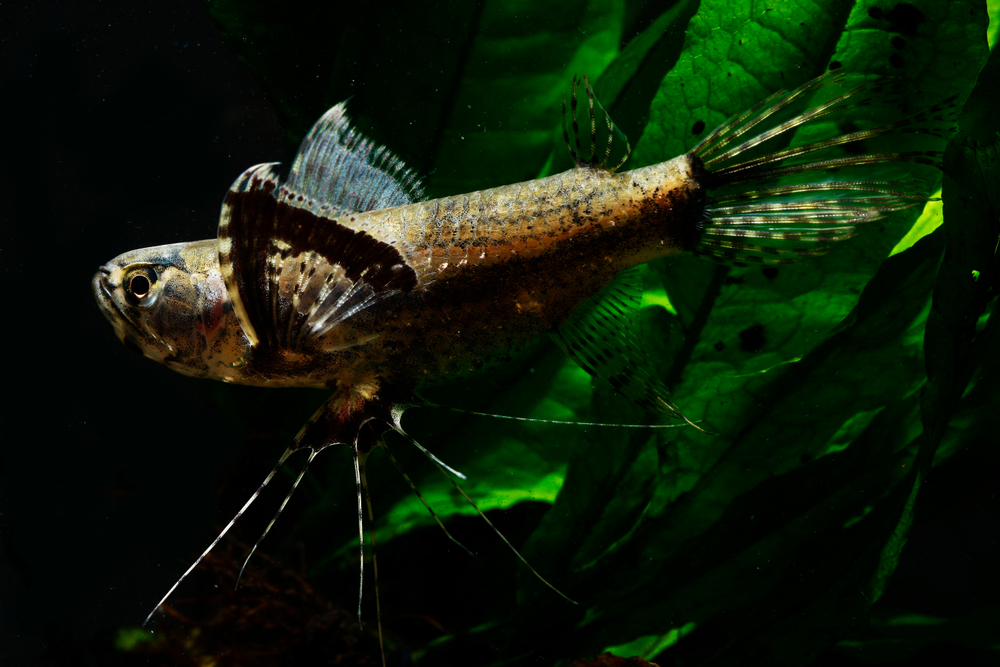
A long time native to the rivers of Africa, the Freshwater African Butterflyfish is a slow-moving fish with a unique history. This species’ morphology has not changed for more than 100 million years, making it one of the oldest fish species on this list!
These beautiful fish look like butterflies when viewed from a distance. Their long ventral, caudal, and dorsal fins give them the illusion of wings. Their mouths are also shaped like a frown to help them catch small fish and bugs. Most Butterflyfish have a dark brown color with a speckled pattern that helps them blend in with plants.
These fish can live in fish communities but it’s not a good idea to keep them with smaller fish. Instead, keep them with other butterflyfish and regularly feed them brine shrimp, bugs, and frozen foods to keep them happy!
Not all exotic fish require extensive or careful aquarium care, though most of the species listed do need some attention! Note that most exotic fish are pricier than your average goldfish due to their rarity. They may also have specific dietary tastes, especially if they’re an aggressive species. If you’re ready to dive into the unique world of exotic fish, we hope one of our choices is the perfect match for your aquarium!